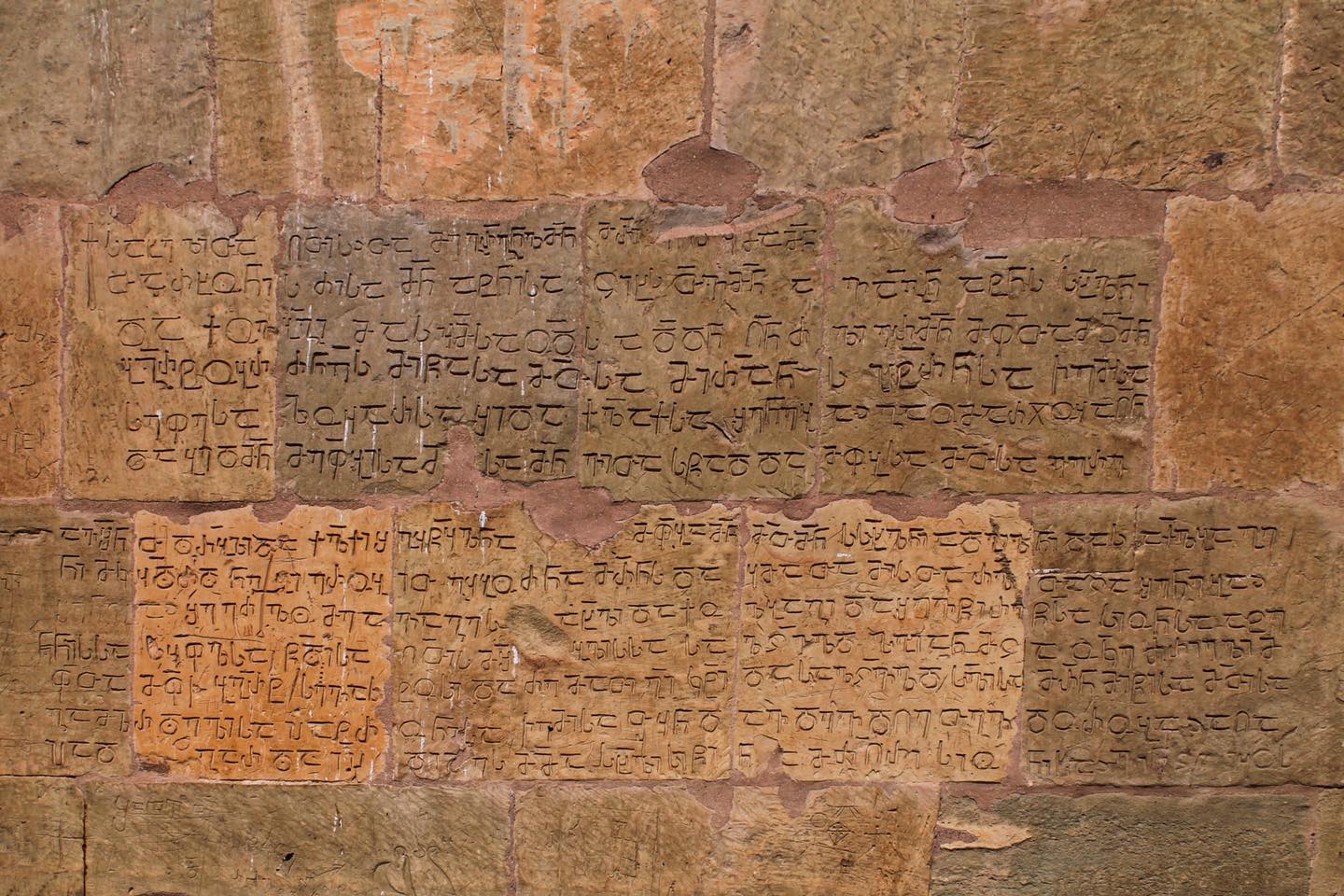Inscriptions of Ateni Sioni Church

Inscriptions in Georgian, Armenian, Greek, Arabic, Syriac, Hebrew and Slavic languages, as well as Greek and Hebrew texts created with Georgian graphemes are still preserved on the walls of the Ateni Sioni Church. The inscriptions are created using different techniques: carving, painting, scratching. There are also mixed examples — carved and then covered in paint. The inscriptions of Ateni Sioni Church are grouped in accordance with their purpose: explanatory inscriptions on frescoes, epitaphs, ktetors' inscriptions, offerings, graffiti of pilgrims, inscriptions of historical content and others. Chronologically, they cover the period from the 8th century to the 19th century. Most of the inscriptions in the interior are covered with 11th century frescoes. Most of the inscriptions of Ateni Sioni Church are in Georgian; They reflect all stages of the development of Georgian writing: Asomtavruli, Nuskha-Khutsuri, Mkhedruli and transitional types between them.
The inscriptions of Ateni Sioni Church provide us with the essential material for the political and cultural history of the monument and the region, as well as Georgia in general. Two stages of construction of Ateni Sioni Church were confirmed on the basis of their study — the first stage was between 7th and 10th centuries and the second stage was completed with the participation of Armenian builders, led by the architect Todosak; A lapidary inscription of the 11th century gives us information about the construction of the city of Athens. In the fresco inscription of Stephen of Kakheti in 739, the term unknown to Georgian historiography is found: “the lord and eristavt-eristavi of Georgians and Megrels”, which documents the political unity of Eastern and Western Georgia much earlier than the 11th century. The inscriptions found on the walls of the Ateni Sioni Church have re-dated the ancient stages of the development of Nuskhuri and Mkhedruli scripts: Nuskhuri dated 835, Mkhedruli dated 875, two ancient samples of Georgian rhyming poetry dated 840–841 were deciphered on the western wall of the southern apse, and extensive quotations from the Georgian Bible books revealed different editions from the lists known today.
Literature: აბრამიშვილი გ., ატენის სიონის უცნობი წარწერები, «მაცნე». ისტ., არქეოლ., ეთნოგრ. და ხელოვნ. ისტორიის სერია, 1976, № 2; მისივე, სტეფანოზ მამფალის ფრესკული წარწერა ატენის სიონში, თბ., 1977; მისივე, ატენის სიონის სამი გრაფიტი, «მნათობი», 1984, № 9; აბრამიშვილი გ., ალექსიძე ზ., მხედრული დამწერლობის სათავეებთან, «ცისკარი», 1978, № 5 – 6; ალექსიძე ზ., ატენის სიონის სომხური წარწერები, თბ., 1978; მისივე, ატენის სიონის ოთხი წარწერა, თბ., 1983; ბარნაველი თ., ატენის სიონის წარწერები, თბ., 1957; ფრესკული წარწერები, I ‒ ატენის სიონი, გ. აბრამიშვილის და ზ. ალექსიძის გამოც., თბ., 1989.


